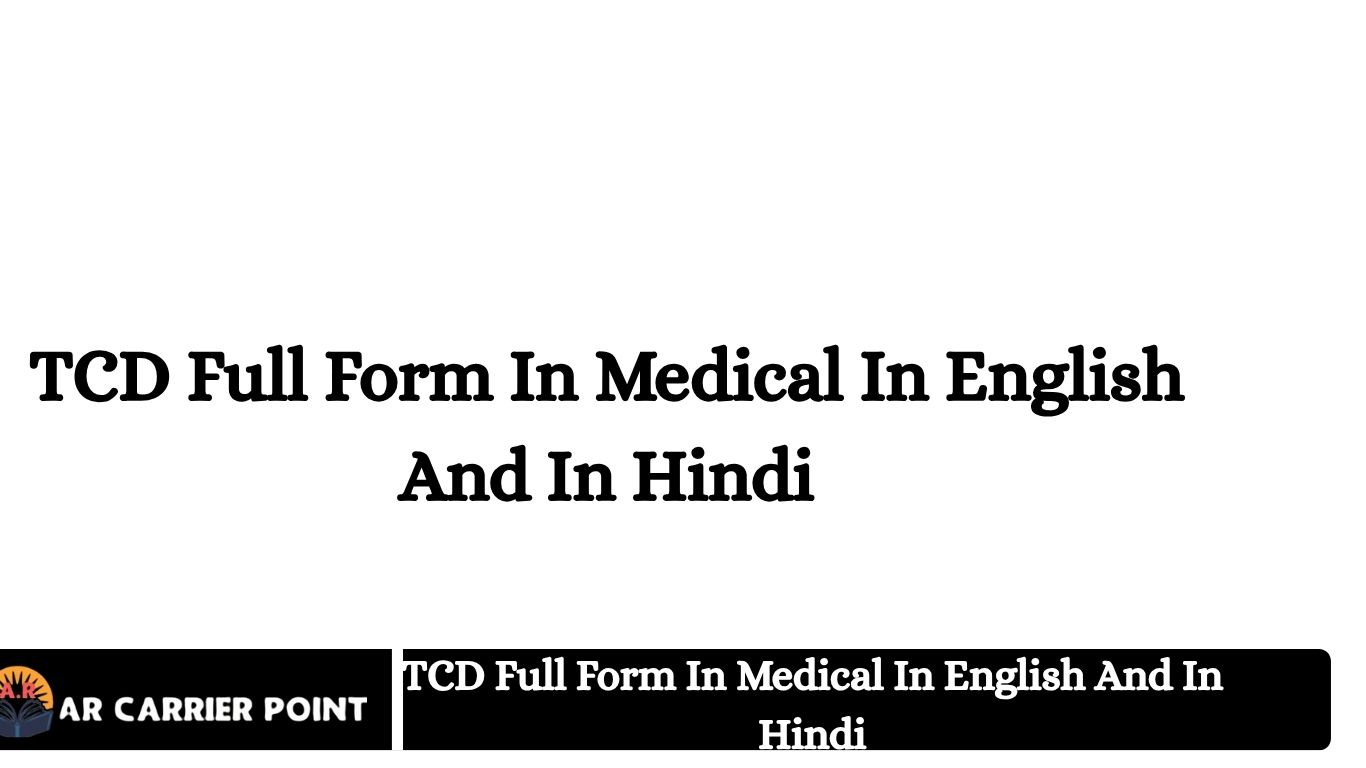TCD Full Form In Medical In English
TCD stands for Transcranial Doppler. It is a non-invasive ultrasound technique used to measure the velocity of blood flow through the brain’s blood vessels. This diagnostic tool is primarily used to assess cerebral circulation and detect conditions like stroke, vasospasm, brain death, or narrowed arteries.
Transcranial Doppler works by sending high-frequency sound waves through the skull to evaluate blood flow in major arteries such as the middle cerebral artery, anterior cerebral artery, and basilar artery. Since it is non-invasive, safe, and repeatable, TCD is commonly used in critical care units, stroke monitoring, and neurology clinics. The procedure is especially valuable in monitoring patients with head injuries, sickle cell disease (to assess stroke risk), or after subarachnoid hemorrhage. It can also help detect emboli (blood clots), assess brain perfusion, and evaluate vasospasm following a brain bleed.
TCD is typically performed by trained technicians or neurologists using a specialized ultrasound device. The results are interpreted to guide medical decisions and treatment planning. Overall, Transcranial Doppler plays a vital role in the real-time evaluation of cerebral hemodynamics and continues to be an important tool in modern neurovascular diagnostics.
TCD Full Form In Medical In Hindi
चिकित्सा क्षेत्र में TCD का फुल फॉर्म ट्रांसक्रेनियल डॉपलर (Transcranial Doppler) होता है। यह एक गैर-आक्रामक (non-invasive) अल्ट्रासाउंड तकनीक है जिसका उपयोग मस्तिष्क (Brain) की रक्त वाहिकाओं में रक्त प्रवाह की गति को मापने के लिए किया जाता है।
Transcranial Doppler का उपयोग मुख्य रूप से मस्तिष्क की रक्त आपूर्ति का मूल्यांकन करने के लिए किया जाता है और यह स्ट्रोक, रक्त वाहिका की संकीर्णता, मस्तिष्क मृत्यु, या वासोस्पाज्म (vasospasm) जैसी स्थितियों का पता लगाने में मदद करता है। यह विधि सिर की खोपड़ी से उच्च आवृत्ति वाली ध्वनि तरंगें भेजकर मस्तिष्क की प्रमुख धमनियों जैसे मिडल सेरेब्रल आर्टरी, एंटीरियर सेरेब्रल आर्टरी और बेसिलर आर्टरी में रक्त के प्रवाह का विश्लेषण करती है।
TCD पूरी तरह से सुरक्षित, दर्द रहित और बार-बार किया जा सकने वाला परीक्षण है, जिसे विशेष रूप से गहन चिकित्सा इकाइयों (ICU), न्यूरोलॉजी क्लीनिकों और स्ट्रोक मॉनिटरिंग में उपयोग किया जाता है। यह विधि सिर की चोट, सिकल सेल रोग, या ब्रेन हेमरेज के बाद मरीजों में रक्त प्रवाह की स्थिति को जानने के लिए अत्यंत उपयोगी होती है।इस प्रक्रिया को विशेष रूप से प्रशिक्षित तकनीशियन या न्यूरोलॉजिस्ट द्वारा किया जाता है। TCD का उपयोग मस्तिष्क में रक्त प्रवाह को रियल टाइम में जानने और उचित उपचार योजना बनाने में किया जाता है।
Read More: MS Engineering Full Form In English And In Hindi
Frequently Asked Questions
What is the full form of TCD in medical terms?
The full form of TCD is Transcranial Doppler.
What is Transcranial Doppler used for?
TCD is used to measure blood flow velocity in the brain’s major arteries to detect conditions like stroke or vasospasm.
Is TCD a painful or invasive test?
No, TCD is a non-invasive and painless ultrasound test.
Who needs a TCD test?
Patients with stroke risk, head injury, brain hemorrhage, or sickle cell disease may be recommended for TCD.
How long does a TCD test take?
A typical TCD scan takes about 30 to 60 minutes, depending on the condition.
Can TCD detect brain death?
Yes, TCD can help confirm brain death by assessing cerebral blood flow absence.
Are there any side effects of TCD?
No, there are no known side effects; it is a safe diagnostic procedure.
Conclusion
Transcranial Doppler (TCD) is a valuable, non-invasive medical test that assesses blood flow in the brain’s major arteries using ultrasound technology. It plays a crucial role in diagnosing and monitoring conditions such as stroke, vasospasm, brain injury, and sickle cell disease. Safe, painless, and effective, TCD provides real-time insights into cerebral circulation, aiding doctors in timely and accurate treatment decisions.


